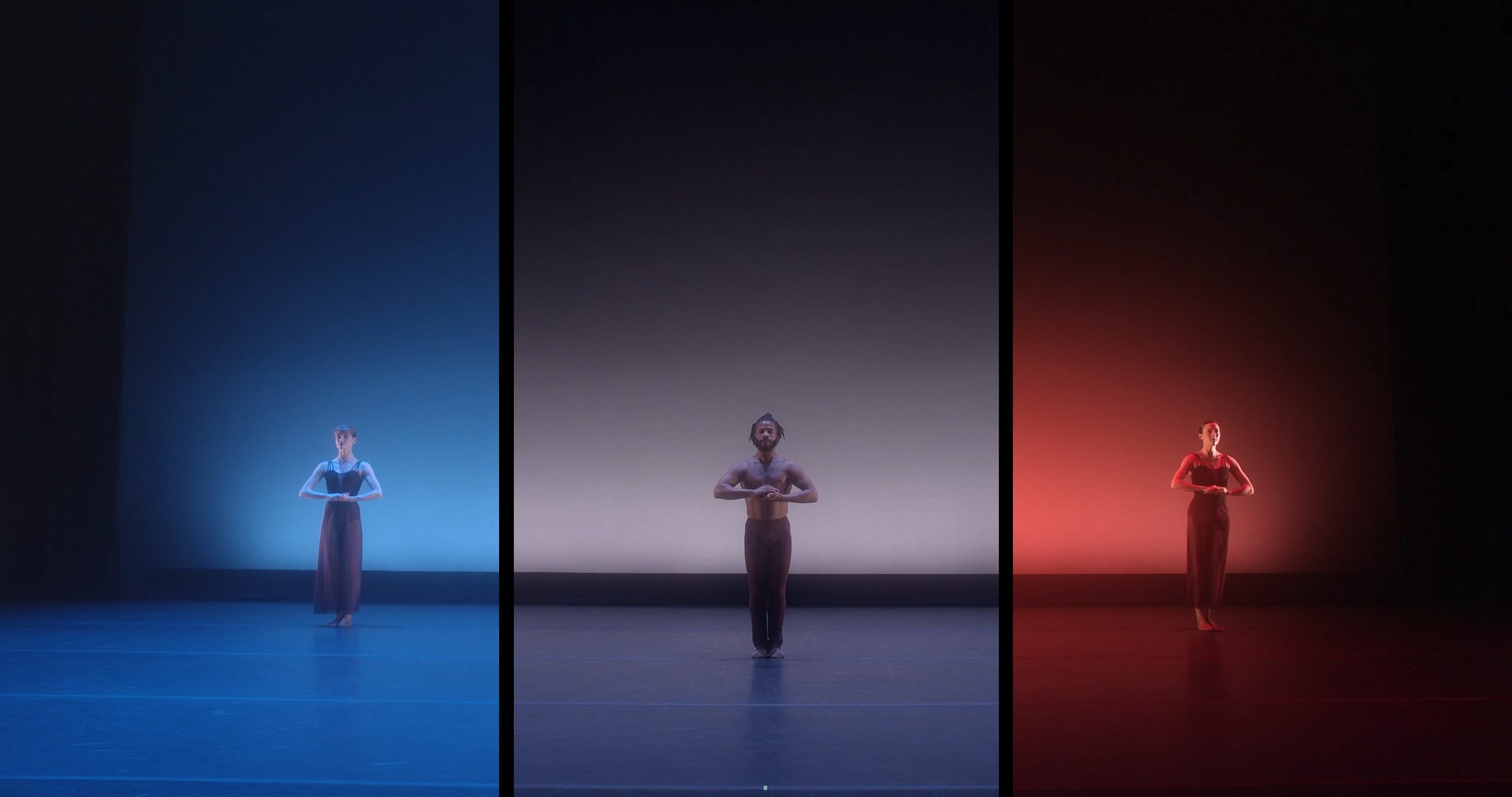OVERLAND PARK, Kan. — I thought I knew Owen/Cox Dance Group. Turns out, a 10-minute dance film, released last month on Easter Sunday, changed my perception of this now-seasoned Kansas City-based ensemble. Call it an air of spontaneity, maybe, or perhaps a sense of reverent rebellion. Honestly, I can’t quite put my finger on what’s different about “And the darkness has not overcome it,” the latest in what Owen/Cox is calling “an unconventional 14th season” of all digital works.
In a collaboration with Kansas City Chorale, “And the darkness” is danced to two movements from the Chorale’s recording of Sergei Rachmaninoff’s All Night Vigil. Co-founder Jennifer Owen, the company’s main choreographer, is routinely drawn to multi-disciplinary collaborations with the city’s various cultural institutions, and is heavily influenced by clean, classical lines—so much so, one could venture to call Owen/Cox a contemporary ballet company. Musically adventurous, thanks in large part to co-founder Brad Cox, a composer, Owen is unabashed in her affection for orchestral scores and jazz. (Her suite set to Bach’s Brandenburg Concerto No. 3, specifically, got a lot of play on the road.)
Filmed onstage at the Carlsen Center at Johnson County Community College—which has become a wellspring for the greater Kansas City dance scene since launching its annual New Dance Partners series in 2013—”And the darkness has not overcome it” overlays footage of three dancers performing solo. It was most likely a pragmatic decision to film Winston Dynamite Brown, Emily Mushinski and Laura Jones Wallner alone, maximizing safety during the pandemic, though it resonates here as a deliberate choice.
Consider the subject. In the Catholic tradition, the Vigil is the liturgy held on the night before Easter. As one of the holiest nights of the year, it’s also the time at which adults desiring to become part of the church are baptized and confirmed. Sergei Rachmaninoff’s homage to the occasion, All Night Vigil, is sung a cappella. It’s a work like no other in his catalog. I thought I knew Rachmaninoff until I first heard the All Night Vigil.
Though Owen/Cox doesn’t specially reference any kind of religiosity in the film, “And the darkness” has baptismal undertones. It opens with Brown, shirtless, bathed in purply white light (designed by Eric Morrow), alone onstage as he softly swipes his arms from side to side ahead of gorgeous, almost slow motion pirouettes and lunges. He’s joined by the two women, not together onstage but as a triptych of side-by-side images in saturated blue light on the left, and red on the right. Squint, and it’s the French flag. Mid-way through, the trio change from their dark, ruddy costumes into bright white, ushering in the morning and ending with arms overhead, gazing toward the heavens and basking in warm, amber light. It doesn’t read as salvation, exactly—more like acceptance of our Earthly fates.
Mushinski and Wallner (who could almost be twins) flank Brown for the majority of the film; they all dance at the same time, but not entirely together, by design. Each dancer catches a wave from solo parts in the bass and tenor sections, or echos the underlying hues of the altos, or flies with the airy, stratospheric sopranos. Through the magic of film (directed by Sean Burgman and edited by Alec Nichols), entrances and exits come in the form of boxes expanding and contracting across the width of my computer screen, or swapping one dancer for another, mid-air. But without instrumentation, the dance is quite liberated from strict attention to tempo or melody, pausing as the singers took a breath, sometimes, but feeling no sense of obligation toward this idea, pro forma. It feels a reverie, extricated by both time and space.
Tramadol online
For this critic, that is the essence of faith. We walk through life with others, alongside them. Sometimes our paths cross. We find similarities. We sometimes move how they move. But in the quiet moments, it’s just you and God, in whatever form He may take.
